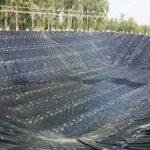According to data from the Spanish Society of Allergology and Clinical Immunology ( SEICAP ), around two million children in Spain suffer from some type of allergy, which represents 25% of the child population. Food allergies are the most frequent in children and those that appear earlier, but there is another type of allergy whose diagnosis grows year after year: pollen allergy.
Spring is the most problematic season of the year for those allergic to pollens, although due to the lack of rain last fall and winter, experts estimate that this year the allergic symptoms could be milder.
If your child has just been diagnosed with a pollen allergy, surely you have dozens of doubts about it. We hope to clarify them for you in this practical informative guide.
What is allergy?
You may already be familiar with allergies in your family , but it could also happen that your child’s allergy diagnosis takes you by surprise. In this case, it is likely that you are quite lost and do not know how and why he has developed this pathology .
Allergy is a defense reaction of the body against external substances that enter the body, either through the digestive or respiratory system or through the skin. The allergic child’s immune system recognizes these foreign substances as foreign, so it tries to defend itself against them and neutralize them, causing allergy symptoms.
Why do some people have allergies and others do not?
Food allergies, seasonal, dust mites, animal hair… There are many factors that can cause the appearance of an allergy , although not all people are allergic, nor do two people allergic to the same substance have why share the same symptoms or intensity of the same.
This leads us to wonder why some people develop allergies and others do not. Although there is no definitive answer, it seems that it is the result of the interaction of several factors , among which is exposure to allergens that trigger the reaction.
There is also a genetic predisposition that makes it much more likely that a person will have an allergy. Thus, if both parents are allergic, a child could be up to five times more likely to develop an allergy in their lifetime than another child with non-allergic parents.
Does pollen allergy only appear in spring?
When we talk about pollen allergies, we almost automatically think of spring. However, this type of respiratory allergy can appear at other times of the year.
It also depends on the geographical area in which the allergic child resides . In this sense, in coastal areas the pollen levels are lower, while in the interior they are higher, although for a shorter time.
Likewise, climatological factors such as wind, rain, humidity or sun influence. Thus, on dry, sunny and windy days, pollen levels skyrocket, while on humid and rainy days the concentrations drop.
What are the pollens that cause the most allergies?
In Spain there are more than ten types of pollens that can cause allergies. According to the SEAIC, grass pollen is the one that causes the most allergic reactions , followed by olive pollen, arizonicas, shade banana, salsola and parietaria.
Pollen levels in different parts of Spain can be consulted on the website of the Aerobiology Committee of the Spanish Society of Allergology and Clinical Immunology (SEAIC).
What will spring be like in Spain for children allergic to pollens?
According to the forecasts made by the SEAIC , due to the lack of rain last fall and winter , the levels of grass pollens have been reduced . This will contribute to reducing allergic symptoms in patients in almost the entire Spanish geography, with the exception of the southern peninsula where a variable intensity is expected.
On the contrary, the lack of rain and the mild winter temperatures have favored the sustained presence in the atmosphere of pollens from cupresaceae , such as cypresses and Arizonans, with very high levels in many areas of central and southern Spain.
Why is the prevalence of allergies increasing?
The number of allergy sufferers increases year after year. Not in vain, the WHO has classified allergies among the six most frequent pathologies in the world.
There are several theories that would explain the growing increase in this pathology , the best known being the “hygiene hypothesis” . This theory suggests that because personal hygiene is much more careful now than decades ago, the immune system would be weakened , so it ends up reacting abnormally to substances that it considers “foreign”, but which are actually harmless.
Experts also link climate change and pollution with the increase in pollen-related allergic diseases. This is how Dr. Ángel Moral, president of the SEAIC Aerobiology Committee, explains it:
“The rise in temperatures is advancing the pollination period and delaying its completion, thus increasing the cycle of exposure to pollens”
In addition, chemical contaminants alter the structure of the pollen causing it to generate stress proteins as a defense mechanism, and as a consequence, the aggressiveness of the pollens increases.
“These stress proteins increase the aggressiveness of pollen in cities and in populations living near highways compared to pollens in rural areas without pollution. For this reason, more cases of allergy occur in cities despite the fact that the concentration of pollens is lower than in the field”
What symptoms does pollen allergy present?
The symptoms of allergy to pollen are very varied and of different intensity according to each patient, the most frequent in children being the following:
- Symptoms of rhinitis and conjunctivitis (45.4%): nasal congestion, runny nose, sneezing, itchy nose, itchy eyes, redness and tearing, itchy throat…
A study carried out by the SEAIC reveals that the reason for which children under 14 years of age most frequently go to the allergist is rhinitis.
- Asthma and bronchospasm (24.9%)
- Urticaria (24.6%): hives on the skin, atopic dermatitis, itching, irritation…
How is pollen allergy treated?
When pollen allergies are suspected in children, it is important to go to an allergist , who will assess the patient’s medical history and confirm the diagnosis through specific tests.
Once the allergy is diagnosed, there are two types of treatment :
- Treatment to control symptoms , such as antihistamines, nasal corticosteroids for rhinitis, eye drops for conjunctivitis or inhalers for bronchial asthma, among others.
This type of medication, together with the application of other measures and the use of FFP2 masks , helps to improve the quality of life of allergic patients by controlling the intensity of their symptoms.
- Immunotherapy or anti- allergic vaccination: this is the only treatment that can modify the natural evolution of the allergic pathology.
What is the pollen vaccine and when can I vaccinate my child?
Allergen immunotherapy consists of using vaccines to desensitize the patient to an allergen . This is especially useful when it is impossible to avoid contact with the allergen (for example, in the case of environmental allergies or an allergy to insect stings ), when the symptoms are severe, or if medications that are routinely used to prevent symptoms they are ineffective.
The vaccine can be administered at any age, although in the case of pollen allergies it is usually indicated after five or six years of age , which is when the diagnosis of allergy is more precise.
Not all children are candidates to receive this type of treatment , and each case must be evaluated by a specialist, taking into account the peculiarities of each patient.




